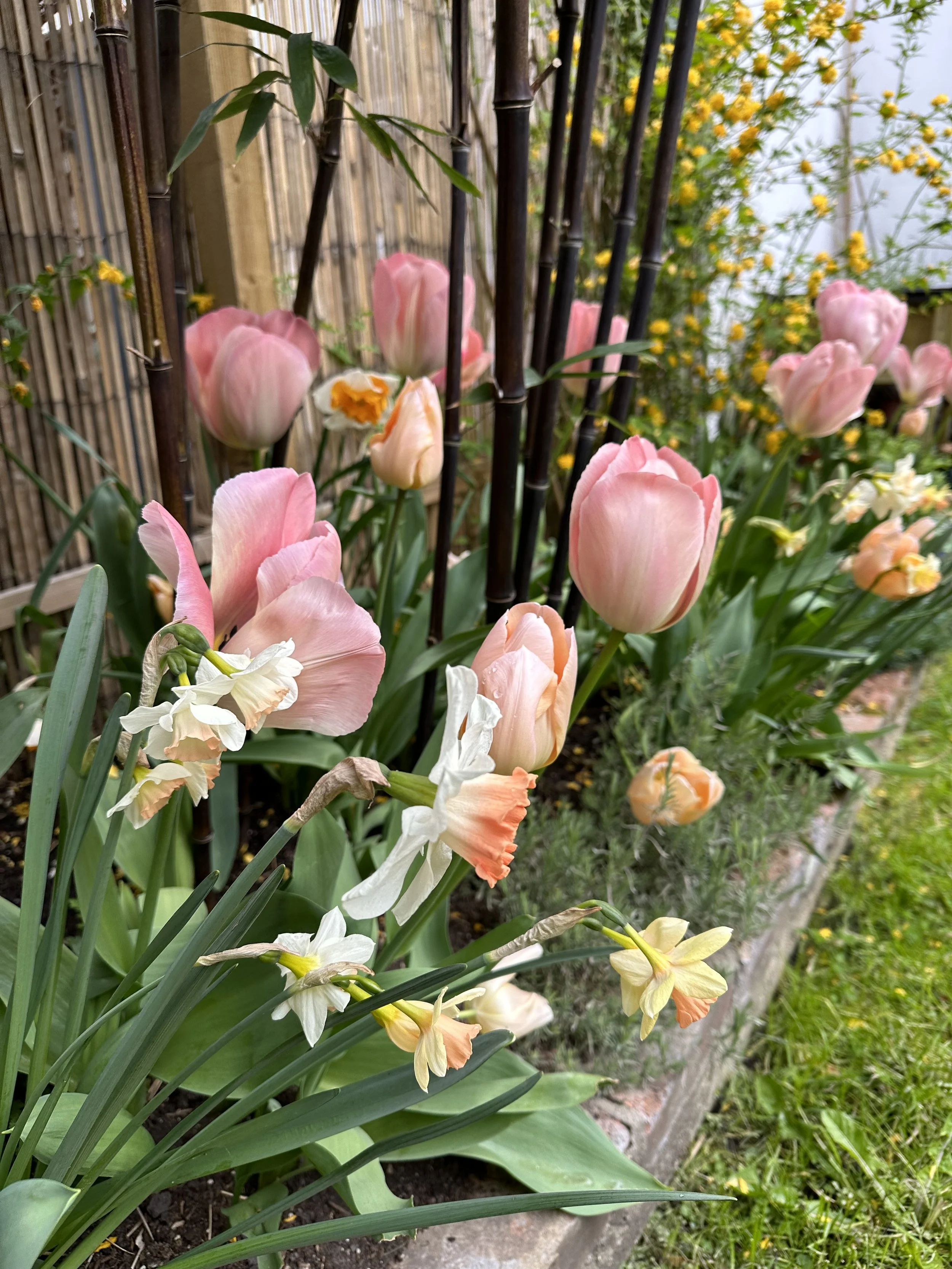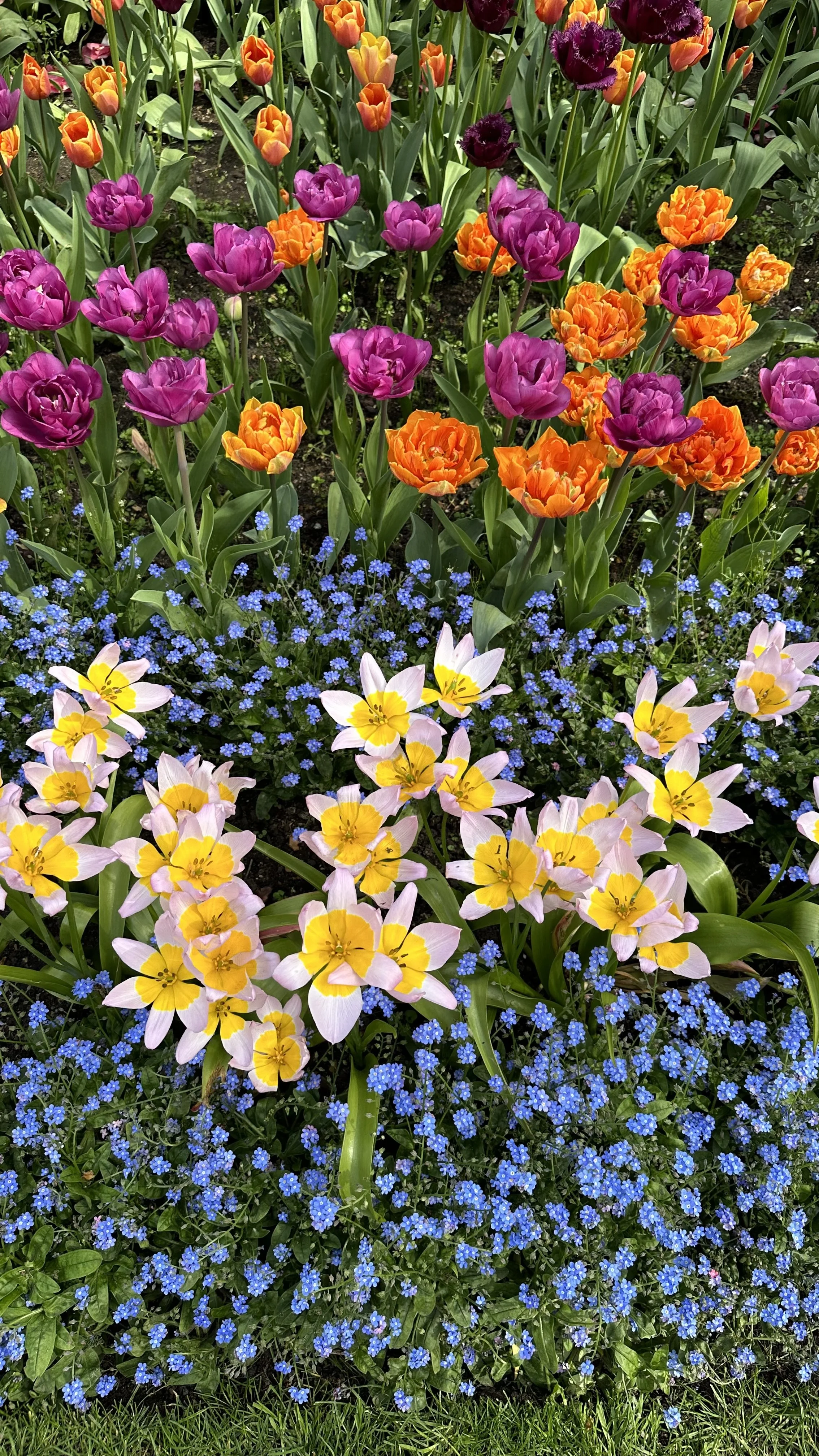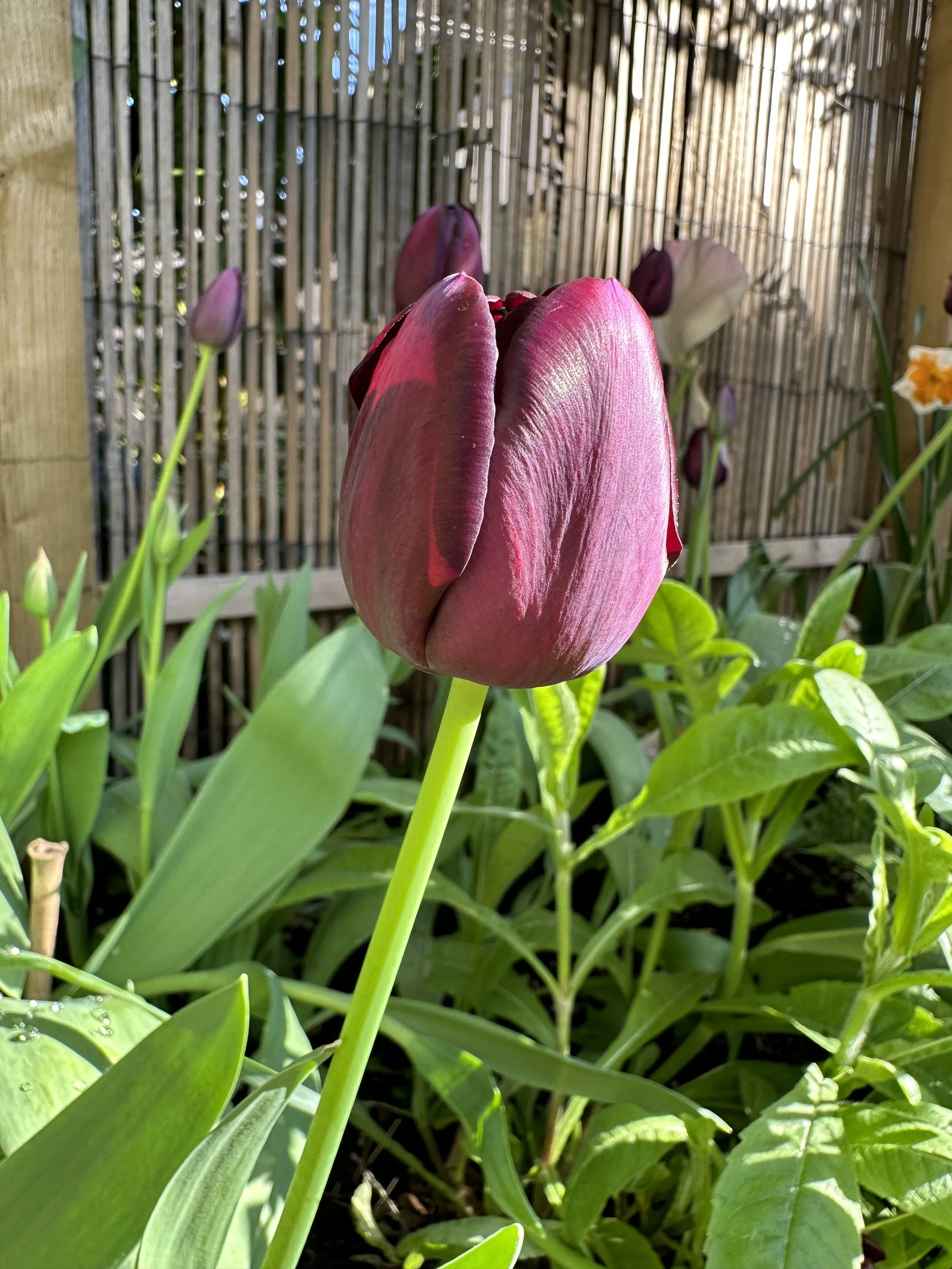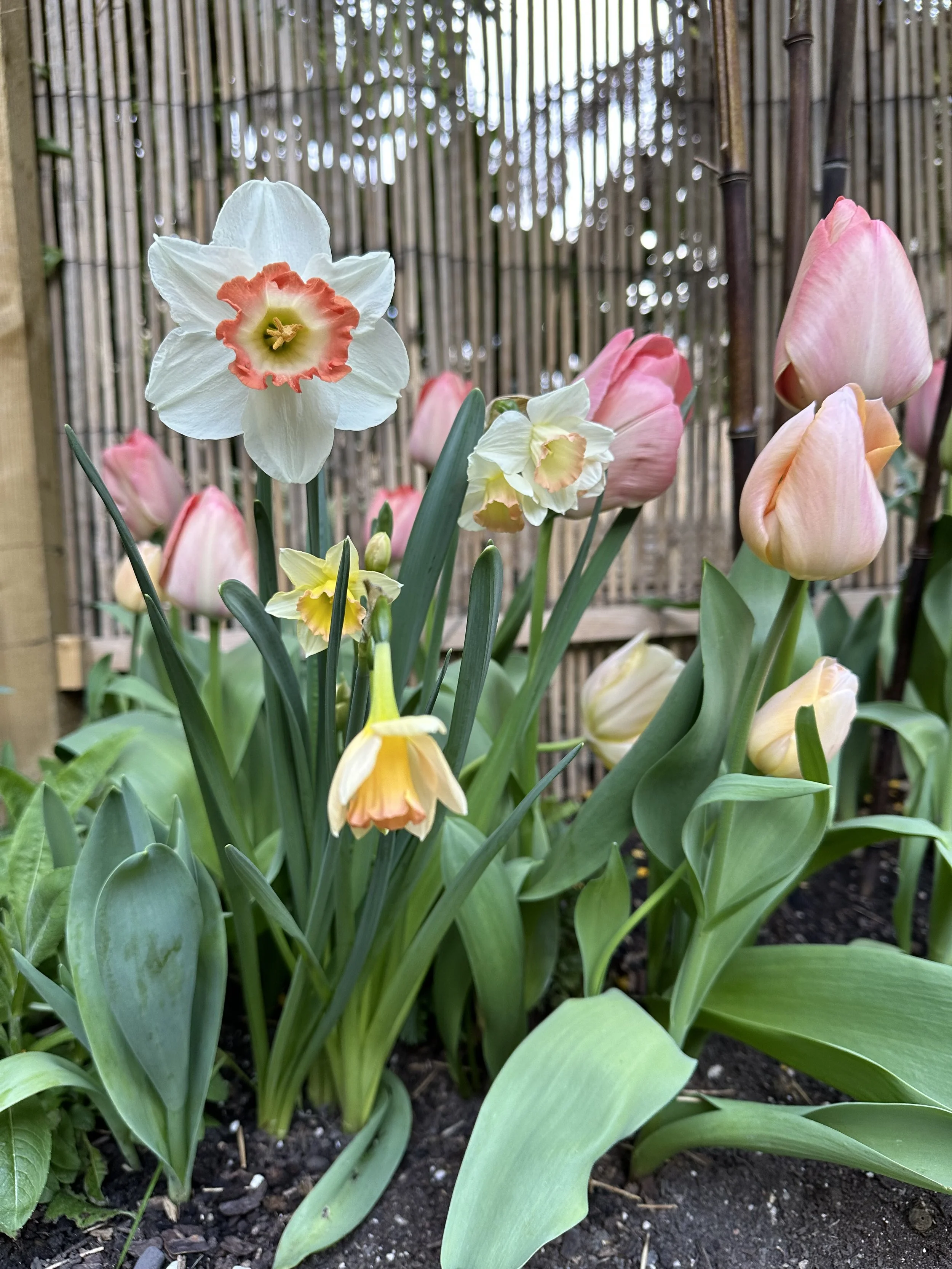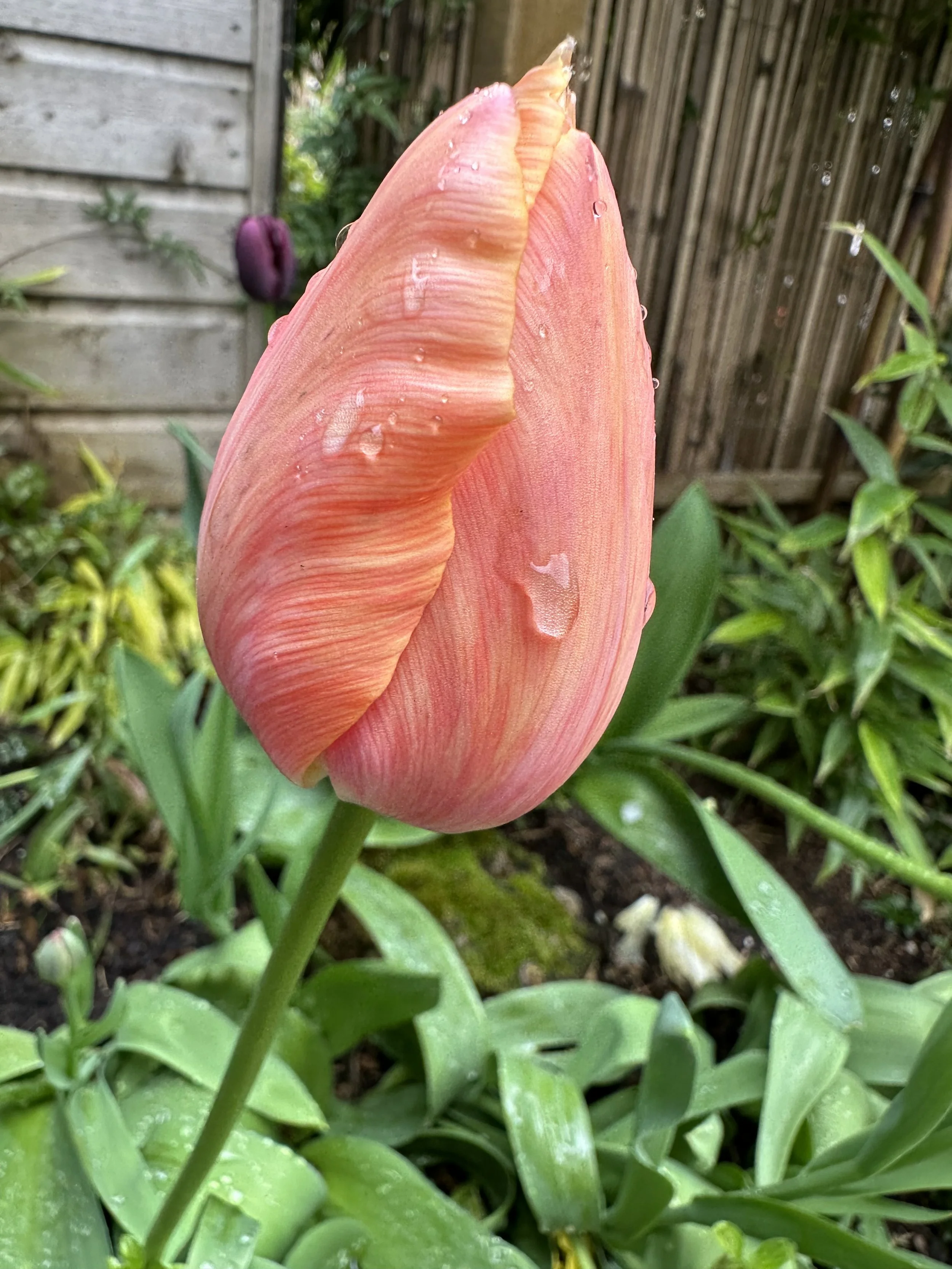Can I Plant Tulip Bulbs in the Spring?
This article has links to products that I may make commission from.
Planting tulip bulbs in spring is a gardening endeavor that combines beauty with challenge.
Traditionally, tulips are planted in the fall, but for those who missed that window or prefer spring gardening, this guide offers expert advice and practical tips.
From understanding the right planting techniques to ensuring proper care for your spring-planted tulips, we'll walk you through each step to ensure your garden bursts into a vibrant display of colors.
Let's delve into the world of spring tulip planting.
To learn more about tulips, check out my guides:
Understanding Tulip Bulb Planting
When it comes to planting tulips, the timing of bulb planting is crucial for ensuring a spectacular bloom.
The common practice is to plant tulip bulbs in the fall, as the cooler temperatures allow for a necessary dormant period before the bulbs break into growth in spring.
This dormancy period is essential for the development of the roots.
Why Fall is Traditionally Preferred
In fall, the soil temperature drops, signaling the bulbs to start establishing their roots.
This period of cool weather is vital for the bulbs to develop a strong root system.
Without this, tulips might not have the foundation they need to absorb enough nutrients and water, impacting their growth and flowering.
For more fun ways to plant bulbs, check out my guides:
Spring Planting: Breaking the Norm
However, planting tulip bulbs in spring is not a lost cause.
It's a deviation from the norm, suited for those who missed fall planting or for bulbs kept in proper storage over the winter.
Spring planting can still lead to beautiful blooms, although there are a few caveats and considerations:
Bulb Condition:
The bulbs should be firm and free of mold. Soft or shriveled bulbs are unlikely to thrive.
Immediate Planting:
Spring-planted bulbs should be planted as soon as you get them, as they don't benefit from being stored at home.
Expectations for Blooms:
Depending on when you plant in spring, the blooms might be later in the season and potentially less vigorous compared to fall-planted bulbs.
Climate Considerations:
In areas with milder winters, planting in spring might be more feasible.
The key is ensuring that the bulbs are planted early enough to establish roots before the warm weather triggers growth and blooming.
Soil Preparation:
Whether planting in fall or spring, soil preparation is the same.
The soil should be well-draining and fertile.
Adding compost or a balanced fertilizer can improve soil conditions.
In conclusion, understanding the traditional and alternative timing for planting tulip bulbs provides gardeners with flexibility.
While fall planting is ideal, spring planting is a viable option, especially for those willing to experiment and adjust their gardening practices.
My favorite tulip bulbs:
For more tulip tips, check out my guide:
The Right Time for Planting in Spring
Choosing the right time to plant tulip bulbs in spring is a delicate balance.
Unlike fall planting, where the timeline is generally consistent, spring planting depends heavily on local weather conditions and soil readiness.
Understanding Your Local Climate
The first step in determining the right time to plant tulips in spring is to understand the climate in your area.
Generally, the ground should be workable – not frozen or overly wet.
This usually occurs when the daytime temperatures consistently stay above freezing.
Ideal Soil Conditions
Soil temperature is a critical factor.
Tulip bulbs require soil temperatures to be around 55°F (13°C) or slightly cooler.
This can be checked with a soil thermometer.
Planting in soil that is too warm can lead to poor root development, affecting the growth and blooming of the tulips.
Early Spring Planting
In most regions, early spring is the best time to plant tulip bulbs.
This period can vary but typically falls between late March and early April.
The goal is to give the bulbs enough time to establish roots before the warmer summer temperatures set in.
Late Frost Considerations
Be mindful of late frosts, which can occur in early spring.
While tulip bulbs are generally hardy, a severe late frost after the shoots have emerged can damage the young plants.
In areas prone to late frosts, consider covering emerging shoots with mulch or garden fleece.
Check out my guide: The Best Alternatives to Traditional Mulch for Your Garden.
Timing for Specific Zones
For gardeners in warmer zones, where winters are mild, planting can be as early as late February.
In cooler zones, wait until the risk of hard frost has passed, which might be closer to mid-April.
Adjusting for Unusual Weather Patterns
Climate variability can also impact the ideal planting time.
Unusually warm or cold springs might shift your planting schedule.
Stay adaptable and monitor local weather forecasts and soil conditions closely.
In conclusion, finding the right time to plant tulip bulbs in spring requires a keen observation of your local weather patterns and soil conditions.
While there is no one-size-fits-all answer, the general rule is to plant when the ground is workable and the soil temperature is suitable for bulb development.
To learn more about growing bulbs, check out my guides:
Secrets to Successfully Planting Allium Bulbs
Preparing for Spring Planting
Preparing the soil for planting tulip bulbs in spring is a critical step that can significantly influence the health and beauty of your tulip blooms.
Proper soil preparation ensures that the bulbs have the best possible environment for growth.
Assessing Soil Quality
The first step in soil preparation is assessing its quality.
Ideal tulip-growing soil should be well-draining yet rich in organic matter.
Tulips do not thrive in waterlogged conditions, so drainage is crucial.
If your soil is heavy or clayey, consider amending it with sand or compost to improve its structure.
Enriching the Soil
Adding compost or well-rotted manure to the soil can boost its fertility, providing the essential nutrients that tulip bulbs need to flourish.
If your soil is particularly poor, a balanced, slow-release fertilizer can be added.
However, be cautious with nitrogen-heavy fertilizers, as they can promote leaf growth at the expense of the flowers.
Here is the fertilizer I recommend using for tulips:
Checking Soil pH
Tulips prefer slightly acidic to neutral soil pH, typically between 6.0 and 7.0.
If your soil is too alkaline or acidic, you can adjust it using lime (to decrease acidity) or sulfur (to increase acidity) based on a soil test's recommendations.
Here is the soil pH tester I use:
Preparing the Planting Site
Select a sunny spot in your garden for tulip planting, as tulips thrive in full sun.
Clear the area of weeds, debris, and other obstructions.
Using a spade, loosen the soil to a depth of at least 12 inches to allow for proper root growth.
Ensure that the planting site does not collect standing water.
Considering Pots or Raised Beds
For those with limited garden space or poor soil conditions, planting tulips in pots or raised beds is an excellent alternative.
Ensure that containers have adequate drainage holes and use a high-quality potting mix.
Watering Before Planting
Before planting the bulbs, water the soil lightly.
This pre-moistening can help ease the bulbs into their new environment and encourage root growth once they are planted.
In summary, preparing the soil for planting tulips in spring involves assessing and improving soil quality, ensuring proper drainage and fertility, and choosing an optimal location.
By giving your tulip bulbs a strong start, you can look forward to vibrant blooms in your garden.
For more spring planting tips, check out my guide:
Planting Process and Techniques
Planting tulip bulbs in spring requires a combination of the right technique and timing.
This section will guide you through the steps to ensure your tulips have the best chance to thrive and bloom beautifully.
Choosing the Right Bulbs
Before planting, select high-quality tulip bulbs.
Look for bulbs that are firm and free of blemishes, mold, or soft spots.
The size of the bulb can also be an indicator of bloom size - larger bulbs often produce larger blooms.
Timing of Planting
In spring, plant tulip bulbs as soon as the ground is thawed and workable.
Avoid planting if the soil is excessively wet, as this can lead to bulb rot.
Planting Depth and Spacing
Tulips generally thrive when planted about 6 to 8 inches deep, which helps with root establishment and provides protection from temperature fluctuations.
Space the bulbs about 4 to 6 inches apart to give each plant enough room to grow.
If you're planting in rows, keep about 12 inches between each row for ease of maintenance.
Orientation of the Bulbs
Place each bulb in the hole with the pointed end facing up.
This is the end from which the stem will grow.
The flatter side, often with some remnants of the roots, should be at the bottom.
Soil Cover and Initial Watering
After placing the bulbs in the holes, cover them with soil.
Gently firm the soil with your hands to eliminate air pockets.
Water the newly planted bulbs moderately to settle the soil around them and initiate root growth.
Avoid overwatering, as this can cause bulb rot.
Mulching for Temperature Control
In regions with unpredictable spring temperatures, consider adding a layer of mulch over the planting area.
Mulch helps to regulate soil temperature and retains moisture, providing a more stable environment for the bulbs.
Here is the mulch I recommend for tulips:
Care After Planting
Once planted, tulip bulbs require minimal care until they start to sprout.
Ensure the soil stays moist but not waterlogged.
As shoots appear, you may need to protect them from late spring frosts with garden fleece or a similar covering.
Here is the garden fleece I recommend:
Adjusting Techniques for Container Planting
If planting tulips in containers, ensure good drainage and use a high-quality potting mix.
The planting depth and spacing remain similar to ground planting.
Containers can offer more control over soil conditions and make it easier to protect the bulbs from extreme weather.
In conclusion, the planting process and techniques for tulips in spring involve careful selection of bulbs, proper planting depth and spacing, and initial care.
By following these guidelines, you can set the stage for a stunning display of tulip blooms in your garden.
Caring for Spring-Planted Tulips
Once your tulip bulbs are planted in the spring, proper care is crucial to ensure they grow and bloom to their full potential.
This section will guide you through the essential care steps for spring-planted tulips.
Sunlight Requirements
Tulips thrive in full sun, which means they need at least 6-8 hours of direct sunlight daily, ideally a south-facing garden location.
If you've planted your bulbs in a less sunny area, you might notice reduced blooming or weaker stems.
Consider the movement of the sun and shadows in your garden when choosing a planting spot.
Watering Regimen
Watering is a key aspect of tulip care. Spring-planted tulips should be watered deeply immediately after planting to encourage root growth.
Once the shoots appear, water regularly, especially during dry spells.
However, avoid over-watering, as standing water can cause bulb rot. The soil should be moist but not waterlogged.
For more watering tips, check out my guide How to Use Watering Globes.
Fertilizing for Growth
While tulips don't require heavy fertilization, a balanced, slow-release bulb fertilizer applied at planting and again when the shoots emerge can promote healthy growth.
Avoid high-nitrogen fertilizers, as they can encourage leaf growth at the expense of flowers.
Here is the fertilizer I recommend:
Mulching for Moisture and Temperature Control
A layer of organic mulch can be beneficial for tulips, especially in areas with variable spring weather.
Mulch helps maintain soil moisture, suppresses weeds, and keeps soil temperatures stable.
Apply a 2-3 inch layer of mulch around the plants, being careful not to cover the emerging shoots.
Dealing with Pests and Diseases
Keep an eye out for common tulip pests such as aphids and bulb mites.
Implement appropriate pest control measures if necessary.
Fungal diseases like tulip fire can be prevented by ensuring good air circulation around the plants and avoiding overhead watering.
Post-Blooming Care
After the tulips have bloomed, remove the spent flowers to prevent the plant from expending energy on seed production.
However, leave the foliage in place until it turns yellow and dies back naturally.
This allows the plant to photosynthesize and store energy in the bulb for the next year's growth.
Preparing for Dormancy
Once the foliage has yellowed, you can gently remove it.
If you planted your tulips in pots, you might consider lifting the bulbs and storing them in a cool, dry place over summer before replanting them in the fall.
Annual Replanting Considerations
Some gardeners choose to treat tulips as annuals, especially when planted in spring, and replant new bulbs each year for consistent blooming.
This is a personal choice based on your garden's performance and your preferences.
In summary, caring for spring-planted tulips involves ensuring adequate sunlight, regular watering, appropriate fertilization, and post-blooming maintenance.
With these care tips, your spring-planted tulips can become a vibrant and beautiful part of your garden landscape.
FAQs
Can tulips be planted in spring?
While fall is the traditional time for planting tulip bulbs, it is possible to plant them in spring, particularly in early spring as soon as the ground is workable.
However, spring-planted tulips may bloom later and possibly not as vigorously as those planted in the fall.
It's important to plant the bulbs as soon as possible to give them enough time to establish before the hotter summer months.
How deep do you plant tulip bulbs?
Tulip bulbs should be planted about 6-8 inches deep.
This depth provides adequate room for root growth and helps protect the bulbs from temperature fluctuations and pests.
The planting depth also influences the stability of the tulip stems as they grow.
Can I plant tulips in March or April?
Yes, you can plant tulips in March or April, especially in regions where the ground thaws by this time.
Keep in mind that planting in March or April might result in later blooming times, and the tulips may not be as robust as those planted in the fall.
Can you plant tulip bulbs in spring?
Yes, it is possible to plant tulip bulbs in spring, although this is less common.
If you choose to plant in spring, ensure the soil is workable and not too wet, and be prepared for blooms that may appear later than those from fall-planted bulbs.
How to plant tulip bulbs in spring?
To plant tulip bulbs in spring, prepare the soil by ensuring it is well-draining and rich in organic matter.
Plant the bulbs 6-8 inches deep, with the pointed end up, and space them about 4-6 inches apart.
Water the bulbs after planting and keep the soil moist but not waterlogged.
Can I plant tulip bulbs in pots in the spring?
Yes, tulip bulbs can be planted in pots in the spring.
Ensure the pots have adequate drainage holes, and use a good-quality potting mix.
The same planting depth and spacing recommendations apply as for ground planting.
Pots can be placed in a sunny spot and should be regularly watered.
Check out my guide: Container Color: Easy Steps to Growing Bulbs in Pots.
How can I protect my spring-planted tulips from late frosts?
To protect spring-planted tulips from late frosts, you can cover them with garden fleece or a similar protective material.
Mulching can also help regulate soil temperature. Be vigilant of weather forecasts and cover the plants if a frost is predicted.
What should I do after my tulips have bloomed?
After your tulips have bloomed, deadhead the flowers to prevent the plant from using energy to produce seeds.
However, leave the foliage until it turns yellow and dies back, as this allows the plant to store energy for the next season's growth.
Once the foliage has yellowed, it can be removed.
Do tulips come back every year?
Tulips can be perennial, but their ability to come back each year with vigor can vary depending on the variety and growing conditions.
In some cases, gardeners choose to treat them as annuals and replant new bulbs each year for guaranteed blooms.
Can I store tulip bulbs after spring planting?
If you decide to lift tulip bulbs after they have finished blooming and the foliage has died back, they can be stored.
Clean the bulbs and store them in a cool, dry place until fall. Before storing, check for any signs of disease or damage and discard any unhealthy bulbs.
Wrap-Up
In summary, while planting tulip bulbs in the spring is less traditional than in the fall, it remains a viable and rewarding gardening endeavor.
Whether you're a seasoned gardener or a beginner, the act of planting bulbs in spring offers a unique opportunity to add color and life to your garden.
With careful attention to the type and condition of the bulbs, along with proper soil preparation and care, you can successfully plant bulbs and enjoy the beauty of tulips.
Remember, the key to vibrant blooms lies in choosing the right time to plant bulbs, providing them with the necessary care, and embracing the unique challenges and rewards that come with spring bulb planting.
Embrace the journey of gardening, and let the bulbs you plant this spring blossom into a stunning display in your garden.
